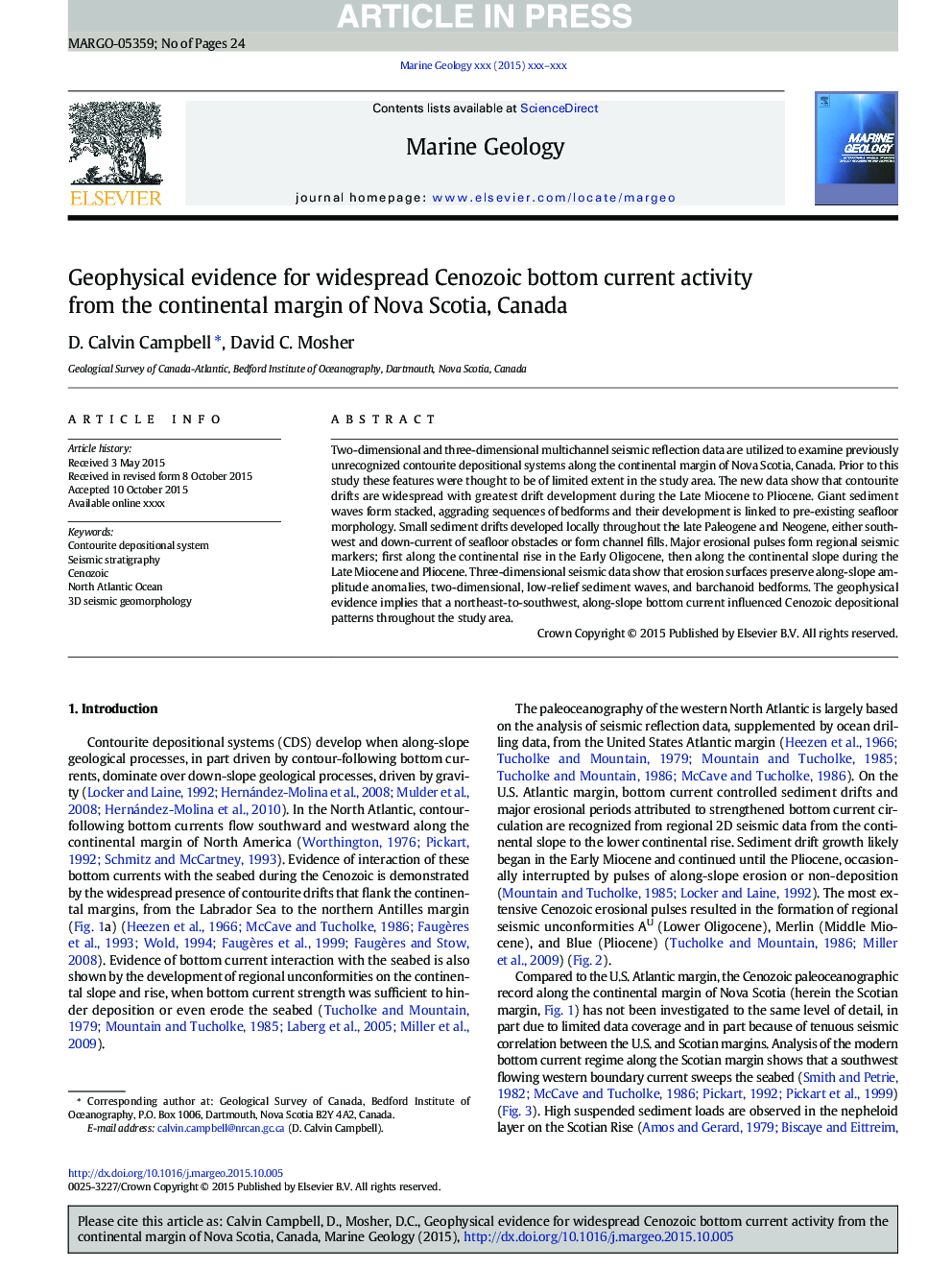| Article ID | Journal | Published Year | Pages | File Type |
|---|---|---|---|---|
| 6441410 | Marine Geology | 2016 | 24 Pages |
Abstract
Two-dimensional and three-dimensional multichannel seismic reflection data are utilized to examine previously unrecognized contourite depositional systems along the continental margin of Nova Scotia, Canada. Prior to this study these features were thought to be of limited extent in the study area. The new data show that contourite drifts are widespread with greatest drift development during the Late Miocene to Pliocene. Giant sediment waves form stacked, aggrading sequences of bedforms and their development is linked to pre-existing seafloor morphology. Small sediment drifts developed locally throughout the late Paleogene and Neogene, either southwest and down-current of seafloor obstacles or form channel fills. Major erosional pulses form regional seismic markers; first along the continental rise in the Early Oligocene, then along the continental slope during the Late Miocene and Pliocene. Three-dimensional seismic data show that erosion surfaces preserve along-slope amplitude anomalies, two-dimensional, low-relief sediment waves, and barchanoid bedforms. The geophysical evidence implies that a northeast-to-southwest, along-slope bottom current influenced Cenozoic depositional patterns throughout the study area.
Related Topics
Physical Sciences and Engineering
Earth and Planetary Sciences
Geochemistry and Petrology
Authors
D. Calvin Campbell, David C. Mosher,
